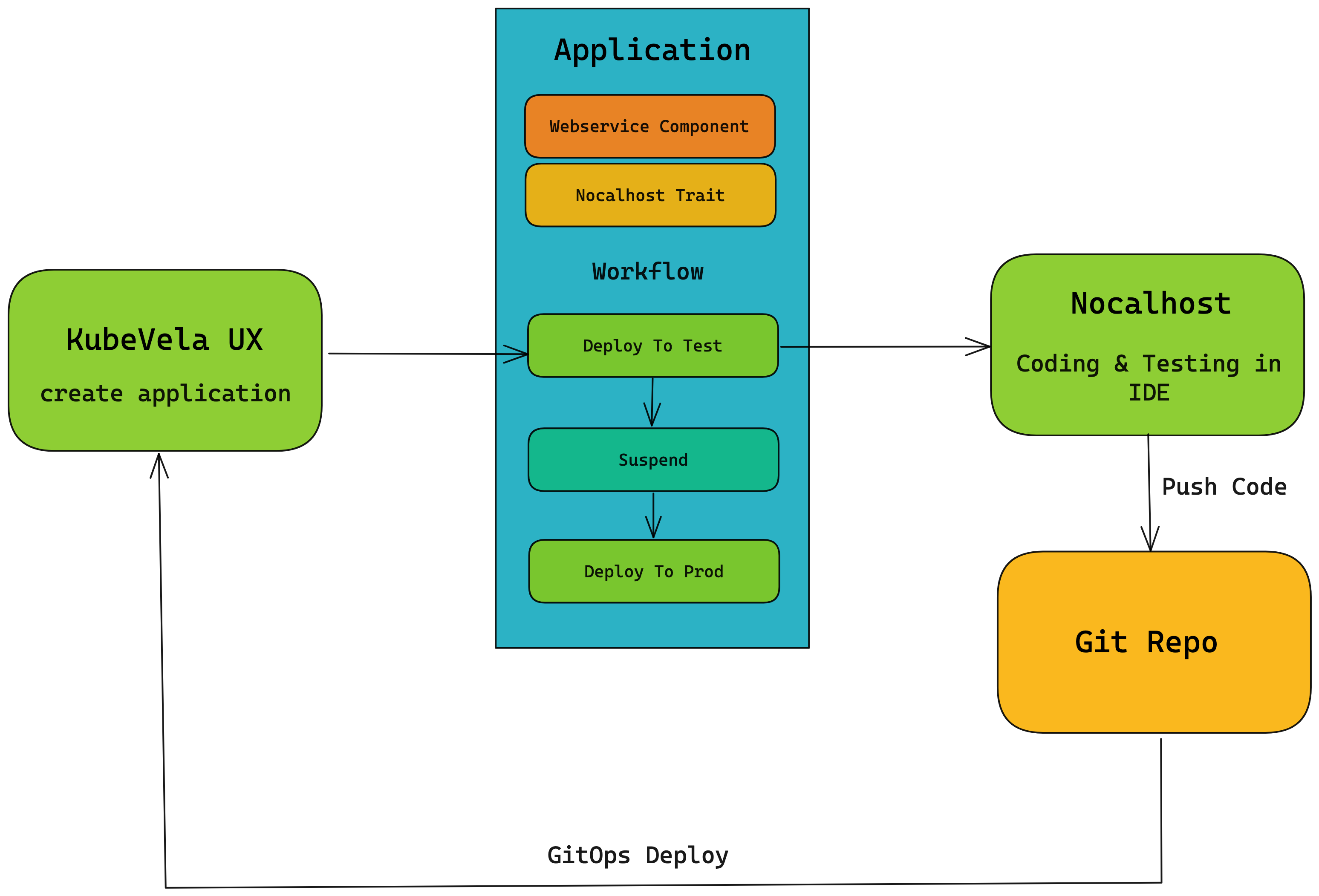With the rapid development of cloud-native, how can we use cloud to empower business development? When launching applications, how can cloud developers easily develop and debug applications in a multi-cluster and hybrid cloud environment? In the deployment process, how to make the application deployment have sufficient verification and reliability?
These crucial issues are urgently needed to be resolved.
In this article, we will use KubeVela and Nocalhost to provide a solution for cloud debugging and multi-cluster hybrid cloud deployment.
When a new application needs to be developed and launched, we hope that the results of debugging in the local IDE can be consistent with the final deployment state in the cloud. Such a consistent posture gives us the greatest confidence in deployment and allows us to iteratively apply updates in a more efficient and agile way like GitOps. That is: when new code is pushed to the code repository, the applications in the environment are automatically updated in real time.
Based on KubeVela and Nocalhost, we can deploy application like below:

As shown in the figure: Use KubeVela to create an application, deploy the application to the test environment, and pause it. Use Nocalhost to debug the application in the cloud. After debugging, push the debugged code to the code repository, use GitOps to deploy with KubeVela, and then update it to the production environment after verification in the test environment.
In the following, we will introduce how to use KubeVela and Nocalhost for cloud debugging and multi-cluster hybrid cloud deployment.




